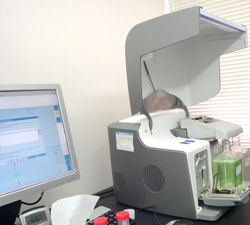Miho Murayama:Professor of Kyoto University Wildlife Research Center.
This site has introduce the new research and information content of my latest.



Toward a society living in harmony with nature
As basic information for conservation, we have been conducting studies of genetic relatedness between individuals within the same group (location and species) and examining phylogenetic relationships among species by genetic analysis. However for many wildlife species there is a lack of suitable DNA markers to undertake such work. Thus, we utilize next-generation sequencing to isolate microsatellite markers, which is much more efficient than previous methods. So far, we have found new markers from grasscutter (rodent living in West Africa), golden eagle, Grevy’s zebra, Japanese giant salamander and some endangered plants. By using the markers we have obtained information about the genetic relationships within groups, individual breeding success, the diversity of the group and identification of hybrids, as well as learning more about species behaviour and ecologySaving endangered species
Not only wild animals but also local livestock breeds are in danger of extinction. Local livestock breeds are not as productive as common livestock breeds, however they have some genetic features suitable for specific habitat, for example feed efficiency, heat tolerance, and disease resistance. We conduct research on genetic diversity of pigeon and chicken to identify the species or breeds that should be priorities for conservation. Furthermore, improving efficiency and productivity of local livestock breeds can lead to reduced hunting pressure on wild animals. We work in collaboration with University of Ghana to search for genes associated with improved productivity by isolating DNA markers of the local grasscutter and guinea fowl.Link to “Ghana Grasscutter Project”
